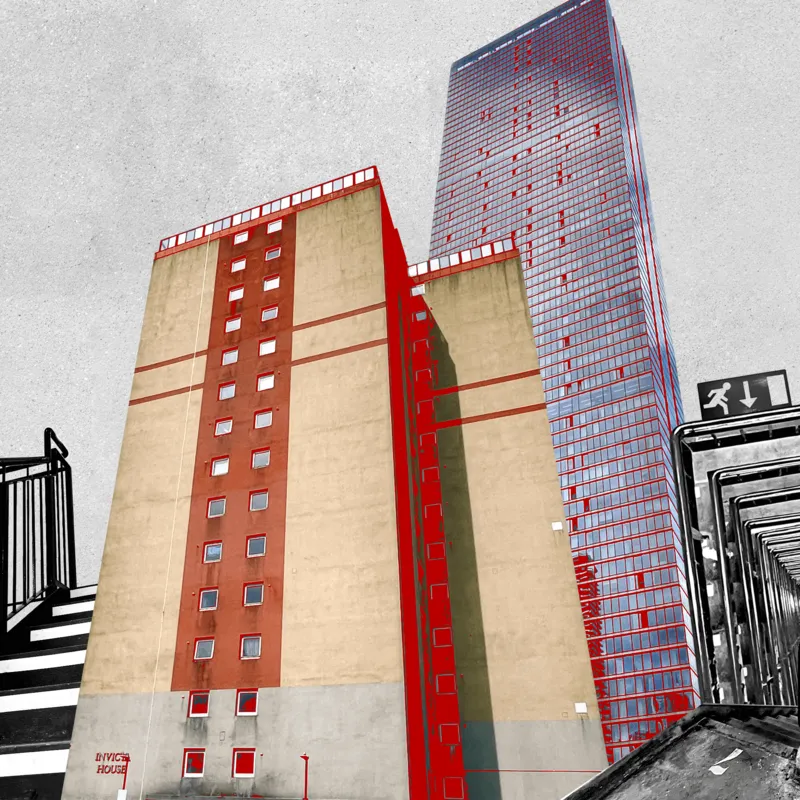Fire safety remains a critical concern in the UK, especially in high-rise buildings. Recent comparisons between a luxury London tower and an estate in Margate highlight the stark differences in fire safety measures and standards between these two locations. With growing public awareness, it’s essential to explore why these differences exist and how they impact residents.
Fire Safety in High-Rise London: A Luxurious Approach
London’s skyline is filled with luxury high-rises, boasting cutting-edge design and state-of-the-art amenities. These buildings offer more than just a stunning view—they promise safety and security, especially in case of emergencies. Many of these towers, including the one at the heart of this comparison, adhere to stringent fire safety regulations.
Equipped with advanced fire detection systems, automatic sprinklers, and fire-resistant materials, these towers are a testament to how modern engineering can prioritize safety without compromising aesthetics. But beyond the technology, luxury high-rises often employ round-the-clock fire wardens and regular fire drills to ensure residents are prepared for the worst-case scenario.
One notable feature of the London tower is its ability to provide multiple escape routes. This ensures that, in the event of a fire, residents have more than one way to safely exit the building. In addition, dedicated fire safety officers monitor the property, providing an extra layer of reassurance.
Margate Estate: A Struggle for Safety
On the other side of the spectrum is the Margate estate, where fire safety is less a luxury and more a challenge. Margate, like many estates across the UK, has older buildings that were not constructed with modern fire safety standards in mind. This has led to a patchwork of fire safety upgrades over the years, often hindered by budget constraints and bureaucratic delays.
While the estate has undergone some fire safety improvements, including the installation of basic fire alarms and fire extinguishers, it lacks the comprehensive safety infrastructure found in luxury London towers. There are fewer escape routes, and some buildings still rely on outdated fire doors, which may not provide adequate protection in case of a large-scale fire.
The disparity in fire safety standards between these two locations is clear. Margate residents often express concern over the lack of funding for necessary upgrades, which could drastically improve their safety. With less attention from developers and local authorities, estate residents feel their safety is often overlooked, especially compared to their wealthier counterparts in London.
Government Involvement and Regulations
The UK’s fire safety regulations have undergone significant changes since the Grenfell Tower tragedy in 2017. However, implementation remains uneven across the country. Luxury buildings in central London have the resources and political clout to quickly adapt to new standards, while older estates like Margate struggle to catch up.
The Building Safety Act of 2022 introduced stricter regulations for new developments and emphasized the importance of fire-resistant materials, proper maintenance of safety systems, and regular inspections. But the reality is that while these changes are positive, they disproportionately benefit buildings that already have the resources to comply.
Fire safety in the UK is also heavily influenced by the availability of funding. For affluent areas, upgrades and compliance are often swift and comprehensive. Meanwhile, in more economically disadvantaged areas, such as Margate, safety upgrades take longer, leaving residents vulnerable.
The Human Element: How Safety Affects Residents
For the residents of luxury towers in London, fire safety is often an afterthought. They trust that their building’s management is taking the necessary precautions. However, in Margate, residents face a different reality. Their daily lives are marked by concerns over whether their building could withstand a fire and if they would have enough time to escape.
Margate residents have voiced their frustrations, noting that while luxury towers are fitted with top-tier safety systems, they are left with outdated infrastructure and minimal upgrades. This disparity reflects the broader issue of how social inequality impacts basic safety measures. A resident from the Margate estate commented, “We deserve the same level of safety as anyone else. Why should we be any less protected just because we live in an older building?”
This sentiment is shared by many across the UK, especially in areas where funding for safety improvements remains a contentious issue. It’s a reflection of how wealth and resources can directly influence something as fundamental as the right to live in a safe home.
Looking Ahead: Can Fire Safety Be Equalized?
The fire safety gap between luxury high-rises and older estates is not an unsolvable problem. What’s needed is a concerted effort from both the government and private sectors to ensure that every resident, regardless of where they live, can feel safe in their home. This means more investments in older buildings, faster upgrades, and more comprehensive enforcement of fire safety standards across the board.
Public pressure and advocacy groups have been instrumental in pushing for change. Margate residents, along with others across the UK, are hopeful that the spotlight on fire safety will lead to more equitable policies.
Until then, the tale of two towers—a luxury high-rise in London and a struggling estate in Margate—serves as a reminder of the inequalities that persist even in basic safety measures.
Stay informed on important housing safety updates and more by visiting Digital Digest.







